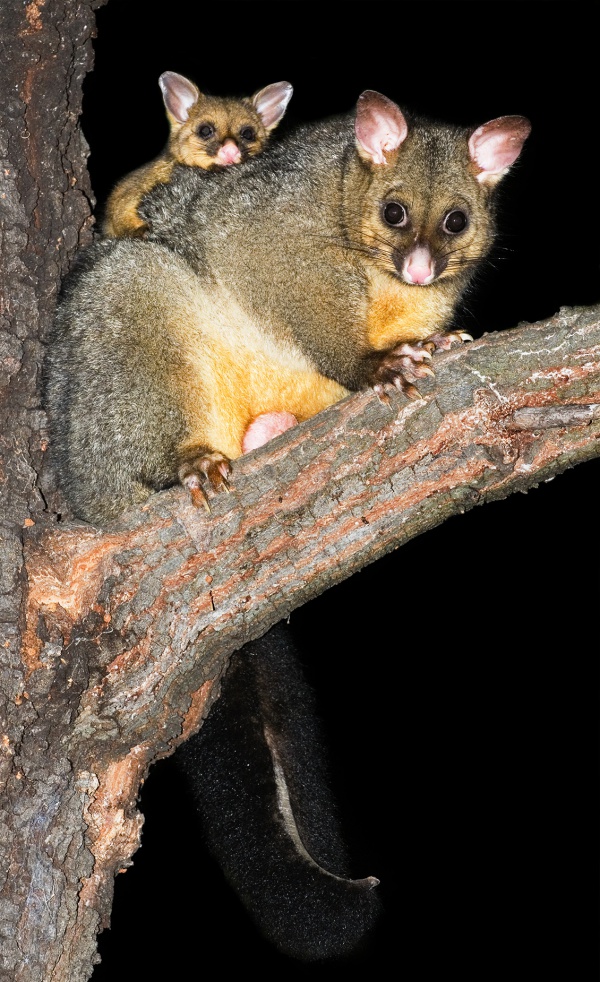Facts About Common brushtail possum
The common brushtail possum is a captivating nocturnal marsupial native to Australia. It is the second-largest species of possum. These creatures are primarily folivores, which means they mainly consume leaves, especially eucalyptus, although they occasionally feed on small mammals. They have adapted remarkably well to various environments, including urban areas, making them a familiar sight in Australian cities. However, their introduction to New Zealand in the 1850s has resulted in significant agricultural and conservation challenges.
You can easily recognize these possums by their large ears, bushy tails, and thick, woolly fur, which varies in color. They typically measure 32 to 58 cm in body length, with tails adding another 24 to 40 cm, and they weigh between 1.2 and 4.5 kg. Males are generally larger than females. Their diet is diverse, encompassing not just eucalyptus leaves but also flowers, fruits, seeds, insects, and even small vertebrates.
Common brushtail possums are predominantly solitary and mark their territories using scent glands. Being arboreal and nocturnal, they make their homes in tree hollows or even the roofs of houses. They breed throughout the year, with females giving birth to a single offspring after a short gestation period of 16 to 18 days. The young remain in the mother's pouch for about 4 to 5 months before they start riding on her back or staying in the den until they are 7 to 9 months old.
In some parts of Australia, these possums are considered pests because they can damage vegetation and buildings. They were once hunted for their fur but are now protected on the mainland. In New Zealand, however, they pose a serious threat to native forests and birds and can carry bovine tuberculosis. Population control measures in New Zealand include bait dropping and hunting.
